Brief
Youth With Disabilities
Untapped STEM Talent
Connected Science Learning April-June 2019 (Volume 1, Issue 10)
By Linda Kekelis
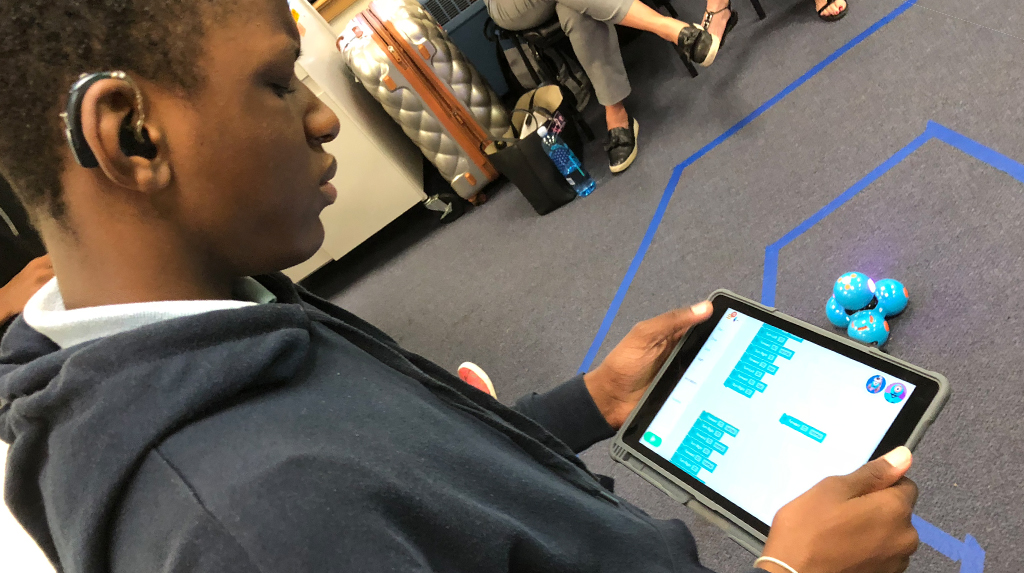
Bold innovations in cybersecurity and artificial intelligence. Brilliant hacks for the digital divide. Breakthroughs in maternal health care to reduce infant mortality.
Imagine if these advances in STEM (science, technology, engineering, and math) were within the minds of a girl with a learning disability in Detroit, a teen in Deaf Kids Code, or a student at the California School for the Blind. Would these youths’ potential be recognized, their talent supported? Would mentors be available to guide their paths toward making these discoveries? Would they have the confidence needed to persevere through the struggles to reach success?
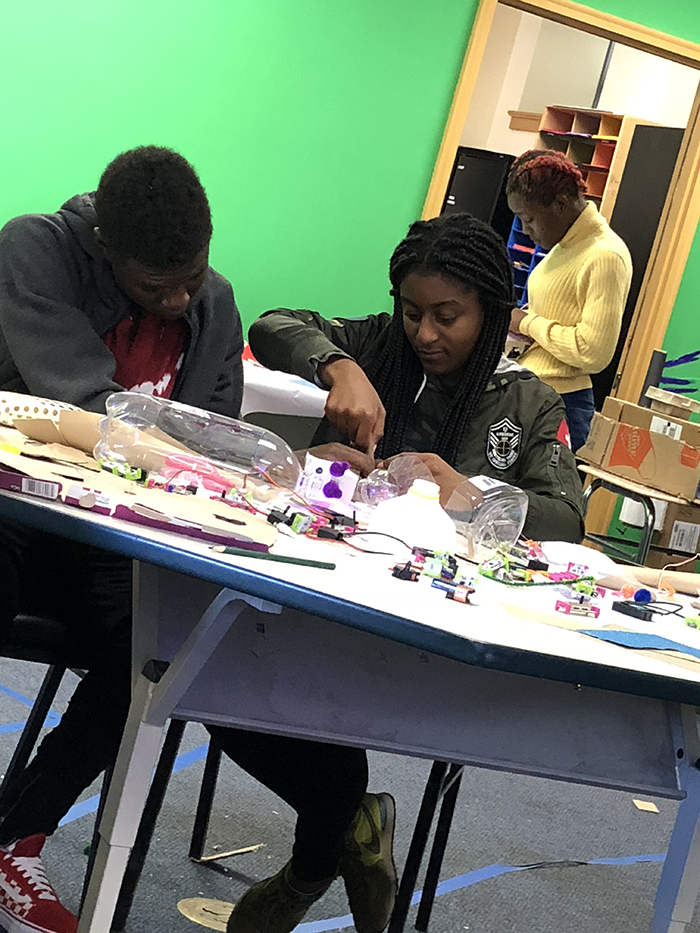 STEM Next Opportunity Fund is committed to ensuring that every child—including girls, youth of color, kids in low-income communities, and youth with disabilities—has access to STEM learning opportunities.
STEM Next Opportunity Fund is committed to ensuring that every child—including girls, youth of color, kids in low-income communities, and youth with disabilities—has access to STEM learning opportunities.
Youth with disabilities hold the potential to be productive and creative adults, yet they are less likely to go to college or live independently than their peers without disabilities. These outcomes are not because of their disability, but often due to the expectations of and opportunities afforded to them. STEM can provide the means to master the skills and develop the confidence and perseverance that make possible an independent, fulfilling life. Afterschool and summer programs, with their hands-on engagement, role models, and collaborative approach, can be especially helpful. They can increase interest and confidence in STEM and introduce a wide range of career pathways. Unfortunately, there are not enough out-of-school (OST) STEM opportunities for youth with disabilities. Yet.
Here are three promising practices for broadening participation in STEM for youth who are disabled. The takeaways come from our work listening to and learning from youth, families, program leaders, and researchers in the field.
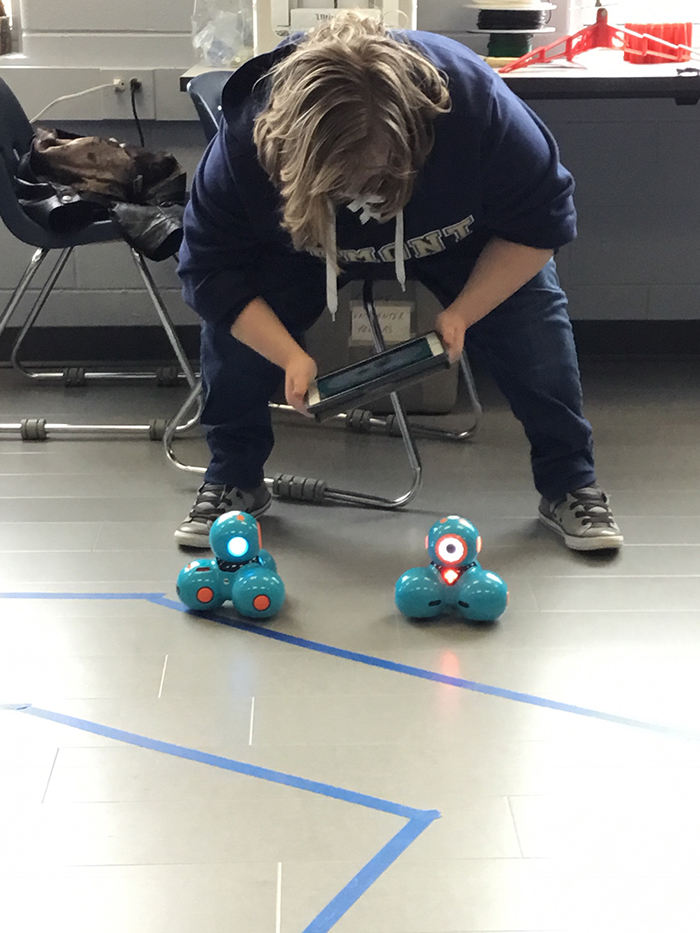 1. Make “yes” the default and empower with STEM
1. Make “yes” the default and empower with STEM
Dissecting cow eyes, building circuits, embarking on a Challenger space mission—these are some of the activities that students at the California School for the Blind expressed interest in for their afterschool Techbridge Girls program. What seemed at first insurmountable challenges—projects that are typically reliant on vision—were accommodated with the help of teachers at the school. For example, the Techbridge Girls team found that Snap Circuits could introduce circuitry and substitute for soldering. Materials for the simulated space mission were prepared in Braille and large print, and the mission was made accessible with hands-on activities. The curriculum and projects from this program are described in Explore It Afterschool! Technology and Science for Students with Visual Impairments.
The takeaway: Instead of holding back, lean into the possibilities. Interestingly, Techbridge Girls discovered that some of the adaptive strategies that they learned at the California School for the Blind worked well with youth in their other programs. For example, reading and following directions as a group and organizing materials such as small screws and bolts led to more successful completion of STEM projects by all. Likewise, staff at Chabot Space and Science Center in Oakland, California, learned new ways to increase the accessibility of their programs and exhibits for all visitors.
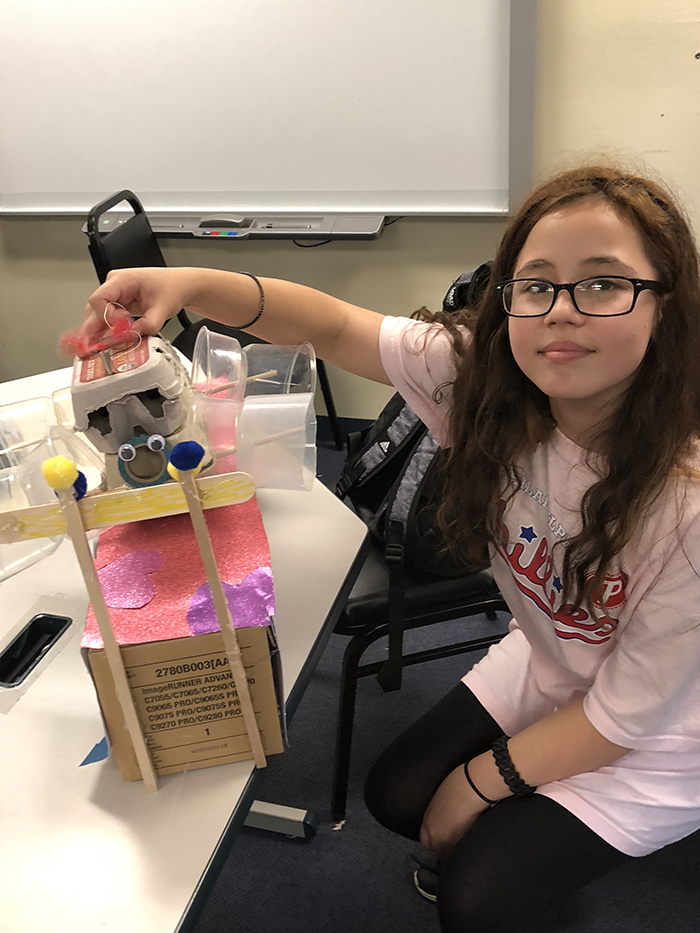 2. Create a meaningful pathway in STEM with career exploration
2. Create a meaningful pathway in STEM with career exploration
How many persons with a sensory or physical impairment have you met, or seen portrayed in a movie or book, who were a marine biologist, chemist, or engineer? Despite the many job opportunities available in STEM, persons who are disabled are not likely to participate in these careers. In fact, 70% of people who are deaf or hard of hearing are unemployed or underemployed. Shireen Hafeez created Deaf Kids Code to reduce this statistic. The program teaches coding and, most importantly, presents career possibilities in technology through job shadows, field trips, and internships. Hafeez recognizes that youth who are hearing impaired “are natural innovators, problem solvers, and visionaries because they are navigating in a world that does not bend toward inclusion or accessibility.” Deaf Kids Code empowers youth to be innovators and not just consumers of technology.
The takeaway: Career exploration is as important as STEM activities in OST programs, especially for youth who are disabled. Weave role models, career exploration, and work experience into OST programs.
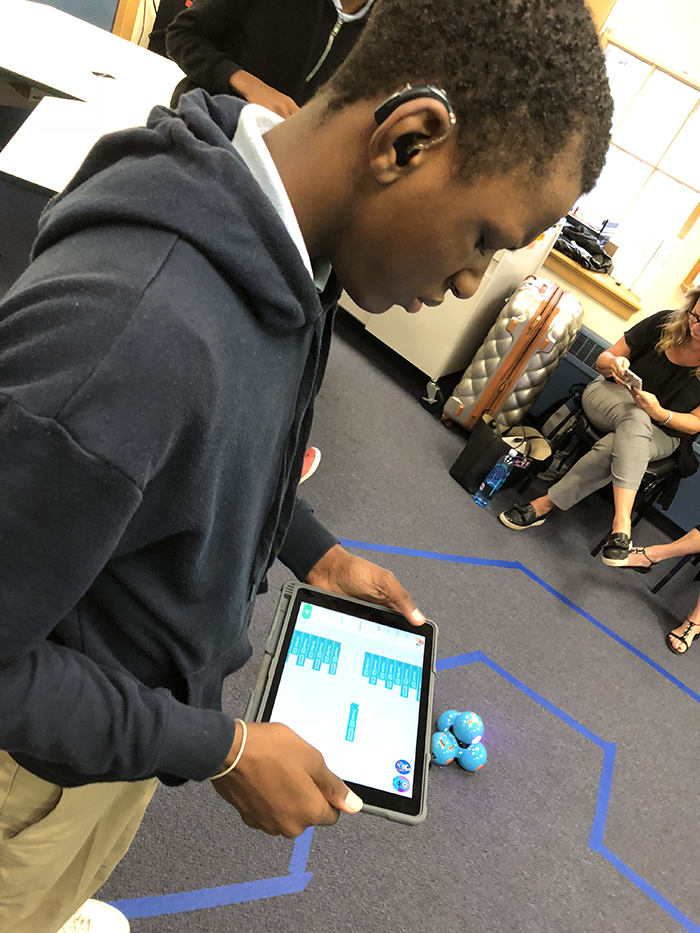 3. Step up to make STEM accessible for all
3. Step up to make STEM accessible for all
We can’t leave it up to the parents of children with disabilities to advocate for access to STEM resources and programs. There are few programs such as Deaf Kids Code or Techbridge Girls that are created or adapted especially for youth with disabilities. There need to be significantly more resources devoted to expanding programs such as these and in making every STEM program accessible so that youth with disabilities and their parents feel welcome and successful. Support for professional development is critical for this work to be impactful. Staff are more likely to engage youth with disabilities in OST STEM programs when they are confident and competent.
The takeaway: Everyone benefits when we speak out and support the inclusion of youth with disabilities and their families in STEM programs. By participating together in STEM programs, youth with and without disabilities have the chance to appreciate similarities and differences. And, youth with disabilities have the opportunity to fulfill their potential in STEM.
You can read more about how to make STEM accessible for youth with disabilities in our case study, Set a Place at the STEM Table for Youth With Disabilities and Their Families. We invite you to check out additional resources to support youth and their families in STEM from STEM Next.
Linda Kekelis (lkekelis@gmail.com) is an advisor for the Family Engagement Project at STEM Next Opportunity Fund in San Diego, California. You can find her on Twitter: @LindaKekelis.
citation: Kekelis, L. 2019. Youth with disabilities: Untapped STEM talent. Connected Science Learning 1 (10). https://www.nsta.org/connected-science-learning/connected-science-learning-april-june-2019/youth-disabilities
Disabilities Inclusion STEM Informal Education


